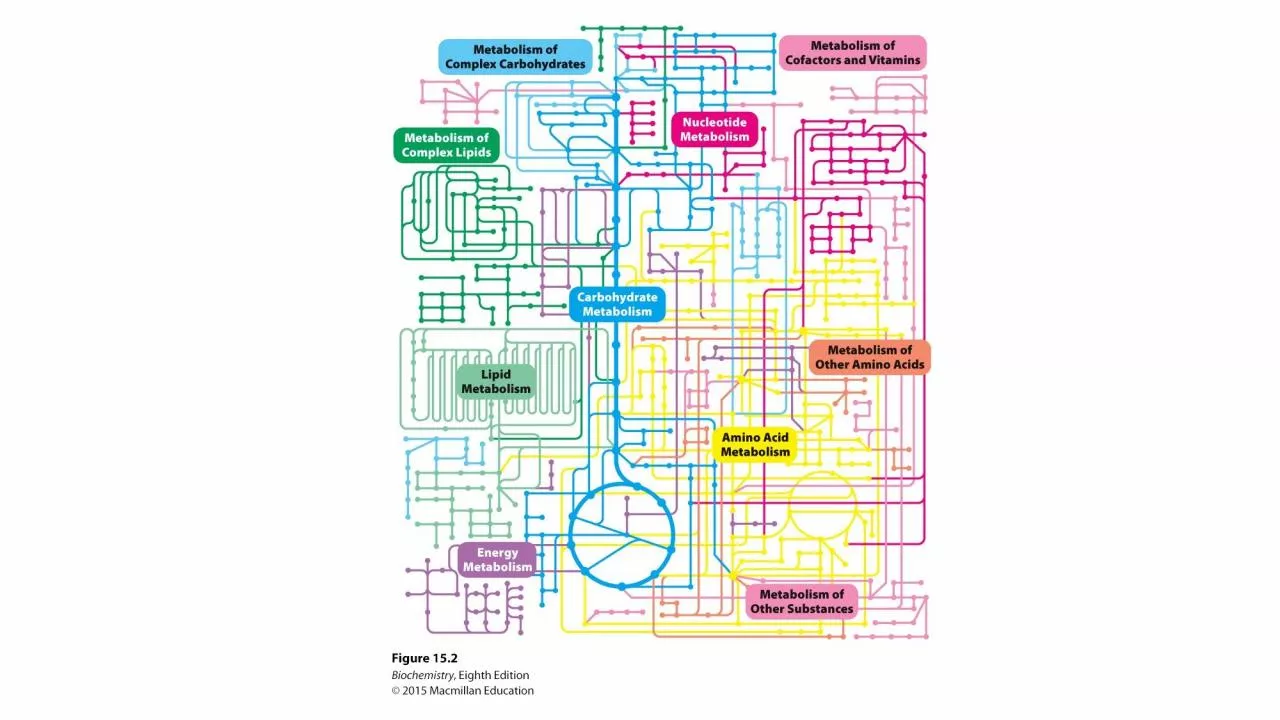

2 Molecules of ATP are consumed in the first 5 reactions 4 Molecules of ATP and 2 molecules of NADH are generated in the second 5 reactions ATP hydrolyzing reactions are control points There are 4 of them ID: 1030291
Download Presentation The PPT/PDF document "Adenosine phosphates can exist in three ..." is the property of its rightful owner. Permission is granted to download and print the materials on this web site for personal, non-commercial use only, and to display it on your personal computer provided you do not modify the materials and that you retain all copyright notices contained in the materials. By downloading content from our website, you accept the terms of this agreement.
1.
2. Adenosine phosphates can exist in three forms: AMP, ADP and ATP
3.
4.
5.
6.
7. 2 Molecules of ATP are consumed in the first 5 reactions4 Molecules of ATP and 2 molecules of NADH are generated in the second 5 reactionsATP hydrolyzing reactions are control points (There are 4 of them)
8. Phosphorylation of glucose to give glucose-6-phosphateIsomerization of glucose-6-phosphate to give fructose-6-phosphatePhosphorylation of fructose-6-phosphate to yield fructose-1,6-bisphosphateCleavage of fructose-1,6,-bisphosphate to give glyceraldehyde-3-phosphate and dihydroxyacetone phosphateIsomerization of dihydroxyacetone phosphate to give glyceraldehyde-3-phosphateReactions of Glycolysis
9. Reactions of GlycolysisOxidation of glyceraldehyde-3-phosphate to give 1,3-bisphosphoglycerateTransfer of a phosphate group from 1,3-bisphosphoglycerate to ADP to give 3-phosphoglycerateIsomerization of 3-phosphoglycerate to give 2-phosphoglycerateDehydration of 2-phosphoglycerate to give phosphoenolpyruvateTransfer of a phosphate group from phosphoenolpyruvate to ADP to give pyruvate
10. Reactions of GlycolysisFirst Step: Hexokinase catalyzed reaction
11. Why is this? What is the permeability of the membrane to ions?
12. Reactions of GlycolysisSecond Step: PhosphoglucoisomeraseWe are converting an aldose to a ketose, why?
13. Reactions of GlycolysisSecond Step: PhosphoglucoisomeraseThe phosphoglucoisomerase mechanism involves: Opening of the pyranose ring (step 1)Proton abstraction leading to enediol formation (step 2) Proton addition to the double bond, followed by ring closure (step 3)
14. Reactions of GlycolysisThird Step: Phosphofructokinase
15. Phosphofructokinase is a Key Regulatory Enzyme in glycolysisPhosphofructokinase (PFK):Exists as a tetramer and subject to allosteric feedbackThe tetramer is composed of L and M subunitsM4, M3L, M2L2, ML3, and L4 all exist. Combinations of these subunits are called isozymesMuscles are rich in M4; the liver is rich in L4ATP is an allosteric effector; high levels inhibit the enzyme, low levels activate itFructose-1,6-bisphosphate is also an allosteric effector
16. Reactions of GlycolysisFourth Step: Aldolase
17. Reactions of GlycolysisFifth Step: Triose Phosphate Isomerase
18. Reactions of GlycolysisFifth Step: Triose Phosphate Isomerase Mechanism
19. In the first stages of glycolysis, glucose is converted to two molecules of glyceraldehyde-3-phosphateThe key intermediate in this series of reactions is fructose-1,6-bisphosphate. The enzyme that catalyzes this reaction, phosphofructokinase, is subject to allosteric controlReactions of GlycolysisHalfway Summary:
20. The Second Phase of GlycolysisMetabolic energy of glucose produces 4 ATP. Net ATP yield for glycolysis is two ATP.Why? The second phase of glycolysis involves two very high energy phosphate intermediates: 1,3-bisphosphoglycerate. Phosphoenolpyruvate.
21. Reactions of GlycolysisSixth Step: Glyceraldehyde-3-Phosphate Dehydrogenase
22. Reactions of GlycolysisSixth Step: Glyceraldehyde-3-Phosphate DehydrogenaseSame Enzyme, 2 parts to overall reaction
23. Reactions of GlycolysisSixth Step: Glyceraldehyde-3-Phosphate DehydrogenaseNicotinamide ring of NAD+
24. Reactions of GlycolysisSeventh Step: Phosphoglycerate kinase (PGK)
25. Reactions of GlycolysisEighth Step: Phosphoglycerate mutase
26. Reactions of GlycolysisNinth Step: Enolase
27. Reactions of GlycolysisTenth Step: Pyruvate kinase
28. Control Points in Glycolysis• Three reactions exhibit particularly large decreases in free energy; the enzymes that catalyze these reactions are sites of allosteric controlHexokinasePhosphofructokinasePyruvate kinase
29. SummaryIn the final stages of glycolysis, two molecules of pyruvate are produced for each molecule of glucose that entered the pathwayThese reactions involve electron transfer, and the net production of two ATP for each glucoseThere are three control points in the glycolytic pathway